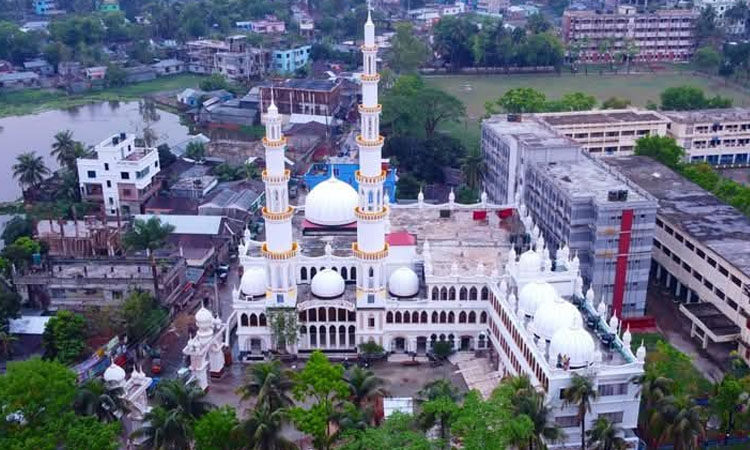News Flash
News Flash

SHERPUR, March 6, 2025 (BSS) - Mai Saheba Jame Mosque in Sherpur is one of the monuments signifying history and heritage.
The use of curved arches and modern architectural design has given the mosque a unique look.
It is said that about 250 years ago, the then Tin-ani Zamindar of Sherpur invited the Zamindar of Muktagachha. Responding to the invitation, the Zamindar of Muktagachha came to Sherpur. Then the Zamindar of Muktagachha rested at a place in Sherpur. The place where he rested was the Zamindar's house for collecting rent.
Being fascinated by the place, the Zamindar of Muktagachha requested the Zamindar of Sherpur to register that land in his name.
The Zamindar of Muktagachha made that request to the Zamindar of Sherpur, Tinani Zamindar. After the invitation, before returning to his own area, the landlord of Muktagachha thought of dedicating the place to a Muslim saint.
At that time, an Islamic preacher named Mir Abdul Baki was found. But the preacher said that he did not need the entire land. He would take as much land as was needed to build a mosque. Then, at the request of the Muslim preacher, the place was dedicated to him for building a mosque.
That preacher established this mosque in 1861. After the death of the Islamic preacher Mir Abdul Baki, his wife Salemun Nesa Bibi preserved and supervised the mosque since its foundation. At that time, everyone called Salemun Nesa 'Ma', who always remained absorbed in the meditation of Allah. From that "Ma", the mosque was named 'Maisahiba Jame Masjid'. After the death of Salemun Nesa, the responsibility was entrusted to his nephew Syed Abdul Ali.
The mosque is located in the heart of Sherpur city, on the south side of Bagraksha Sherpur Government College. In addition, this traditional mosque is not far from Sherpur Jamalpur bus stand. The mosque is a three-story structure. The ground floor is fully air-conditioned.
About 3,000 Muslims can pray in congregation in this mosque at the same time. Every Friday, thousands of Muslims from outside the district city come here to pray in congregation. On this day, everyone prays together for the country and the entire Muslim nation. On the second floor of the mosque, there is a Hujrakhana or Muazzin room. There are two separate places for ablution. One is on the south side of the mosque and the other on the north side where more than 200 Muslims can perform ablution together. There are adequate arrangements for achieving purity. There is an empty field in front of this huge mosque. Two Eid congregations are held here every year. During Ramadan, about 400 to 500 Muslims break their fast in this mosque every day.
The expenses of iftar are borne by the people of the mosque committee and people of different professions in the district.
The mosque has a Khatib, a Sunni Imam, a Muazzin and three Khadems.
The mosque also has numerous elderly students. They study the Holy Quran for 2 hours every day after offering Fajr prayers. Most of the elderly students are over 60 years of age. Two people are employed to guard the entire mosque. One is from the mosque authorities while the other from the municipal authorities.
The mosque is also covered by closed circuit cameras. The mosque was built at a cost of about Taka 4 crore. Besides, Taka 2 to 3 lakh is received from the mosque's donation box every Friday.